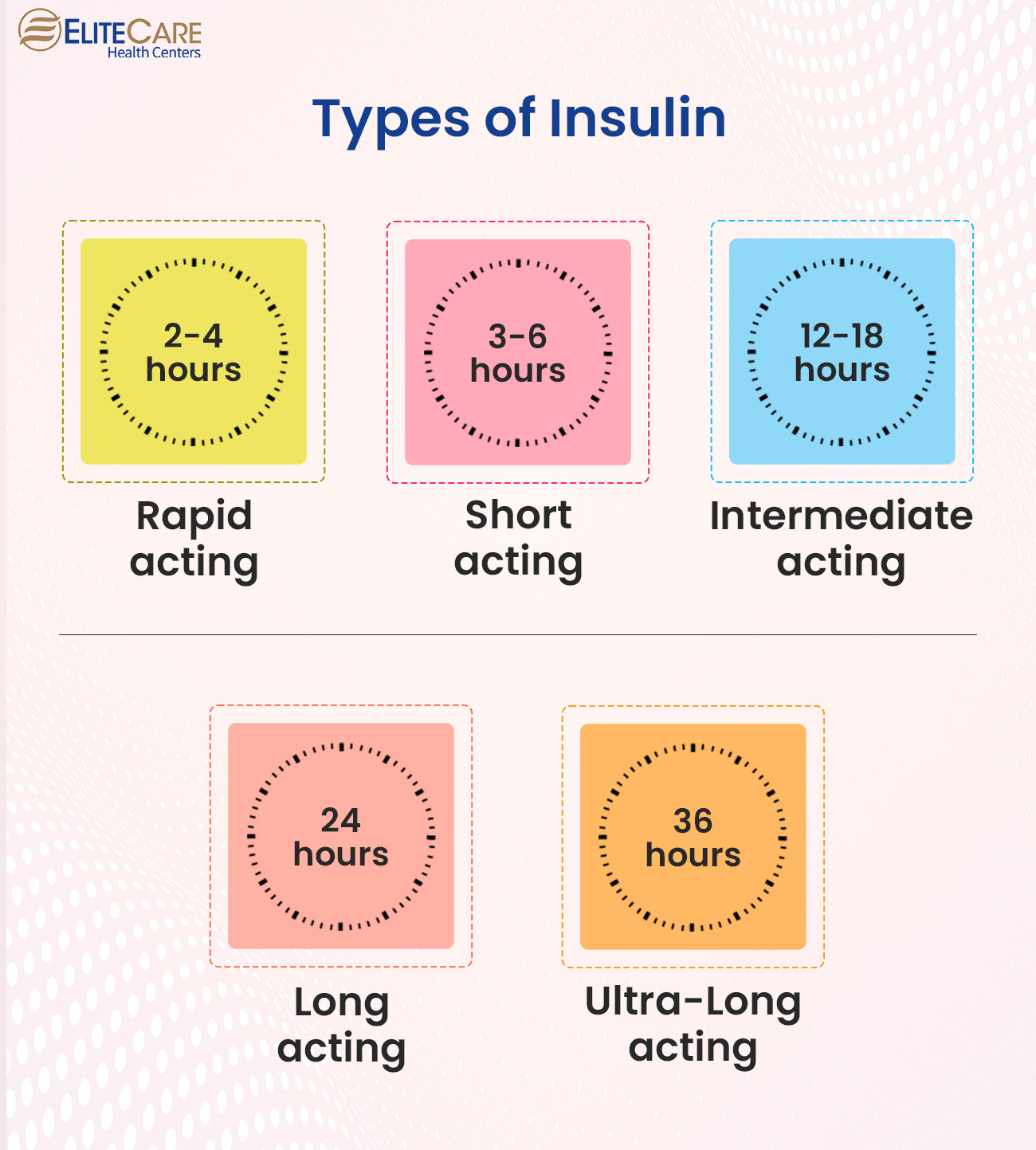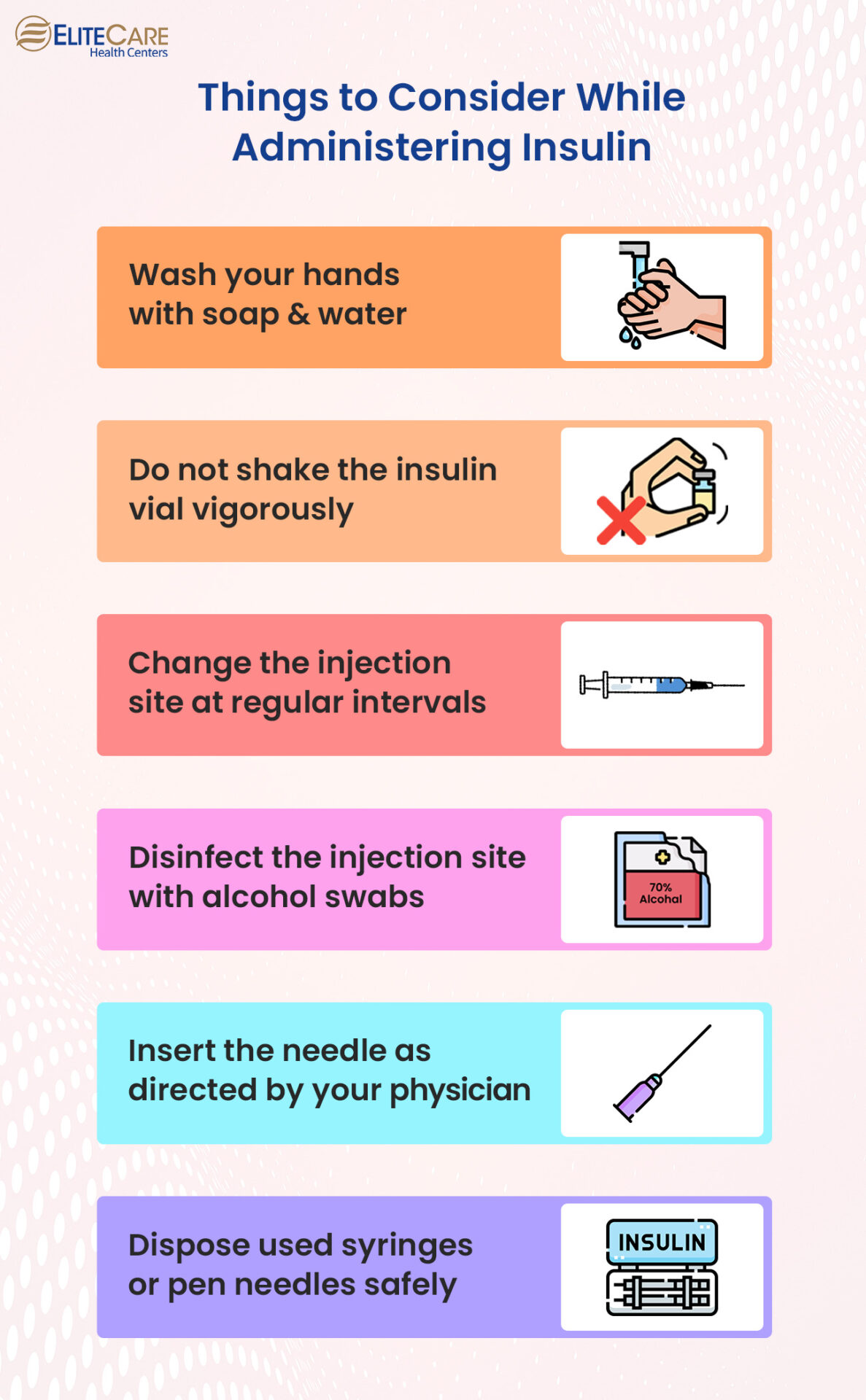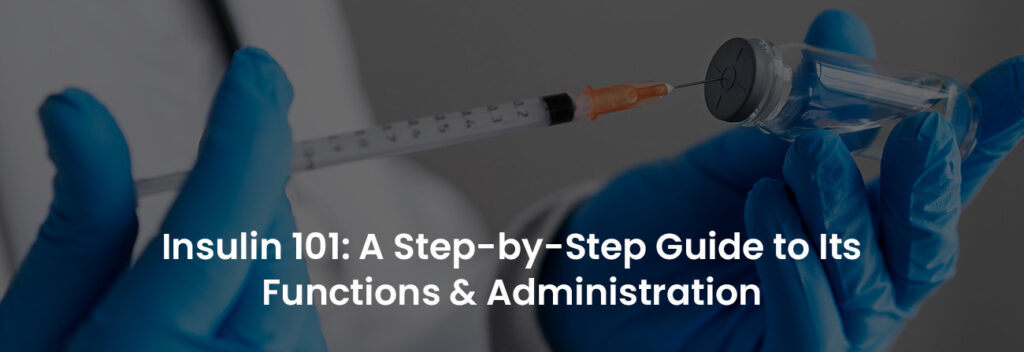
Diabetes, also known as diabetes mellitus, is a chronic metabolic disorder characterized by elevated levels of blood glucose (blood sugar) over a prolonged period. The condition occurs when the body either does not produce enough insulin or cannot effectively utilize the insulin it produces.
Insulin is a hormone that plays a pivotal role in regulating blood glucose levels. In this blog post, we will share insights into the importance of insulin, understand how it works, and provide some useful insulin tips. Read on to learn more.
What is Insulin & How Does It Work?
Insulin is a hormone produced by the pancreas and plays a crucial role in regulating blood glucose levels. Our blood sugar levels rise after we consume foods, particularly carbohydrates. In response to this change, the pancreas then releases insulin into the bloodstream. Insulin acts as a key that unlocks cells, allowing them to absorb glucose from the blood and use it for energy. This process helps maintain balanced blood sugar levels, ensuring our body’s cells receive the energy they need to function properly.
There are 3 factors that explain the function of insulin, which are as follows:
- Onset means the duration before insulin reaches the bloodstream and begins lowering blood glucose.
- Peak time refers to the time during which insulin works at its maximum strength in terms of lowering blood glucose.
- Duration indicates the duration of how long insulin continues to lower blood glucose.
In individuals with diabetes, either the pancreas doesn’t produce enough insulin (Type 1 diabetes) or the body’s cells become resistant to insulin’s effects (Type 2 diabetes), leading to high blood sugar levels and various health complications. Insulin therapy is often used to manage diabetes and keep blood sugar levels in check.
Different types of Insulin

Insulin, a critical hormone for managing diabetes, comes in various types, each with distinct characteristics based on their onset and duration of action. Here’s an overview of the different types of insulin:
1. Rapid-Acting Insulin
This insulin starts working promptly, typically around 15 minutes after injection, and reaches its maximum strength at approximately 1 hour after injection. The effects of rapid-acting insulin last for 2 to 4 hours.
Rapid-acting insulin is commonly taken just before meals to manage the post-meal rise in blood sugar levels
2. Regular (Short-Acting) Insulin
It takes a bit longer to start working, typically about 30 minutes after injection, and reaches its peak efficacy between 2 to 3 hours after injection. The effects of regular insulin last for 3 to 6 hours.
Similar to rapid-acting insulin, regular insulin is taken before meals, around 30 to 60 minutes before eating.
3. Intermediate-Acting Insulin
This type of insulin begins its action approximately 2 to 4 hours after injection and reaches its peak effectiveness between 4 and 12 hours after injection. The effects of intermediate-acting insulin last about 12 to 18 hours.
Intermediate-acting insulin is commonly used to manage blood sugar levels over an extended period.
4. Long-Acting Insulin
Long-acting insulin takes several hours to start working after injection and can effectively lower blood sugar levels for approximately 24 hours. This insulin is typically taken once a day to provide basal insulin coverage throughout the day.
5. Ultra-Long-Acting Insulin
This insulin also takes several hours to start working after injection and can work for an extended period of about 36 hours. Ultra-long-acting insulin provides prolonged basal insulin coverage and is taken once every 1 to 2 days.
What Type of Insulin Do You Need?
Determining the type of insulin needed depends on various factors, including the type of diabetes, individual health goals, lifestyle, and blood sugar control requirements. For most individuals with Type 1 diabetes, a combination of long-acting and rapid-acting insulin is prescribed to replicate the body’s natural hormone production. This often involves multiple daily injections to maintain blood sugar control.
Type 2 diabetics who need insulin typically start with slower-acting insulins, such as intermediate- or long-acting ones, in addition to other treatments like diabetes pills. It’s important to note that Type 2 diabetics can still produce some insulin, but supplementation becomes necessary due to various factors affecting their insulin needs.
For those still experiencing high blood sugar levels despite insulin supplementation, a second type of insulin, such as rapid-acting insulin, may be added before meals. Given the impact of food, medication, and physical activity on blood sugar levels, individuals with diabetes must continuously monitor their levels using test strips, with some Type 1 diabetics opting for continuous glucose monitors to track blood glucose throughout the day.
How to Administer Insulin
Unfortunately, oral insulin is not viable as it would be broken down by stomach acid before entering the bloodstream. However, there are several alternative methods for insulin administration.
- One common method involves using a needle and syringe to inject insulin into the body, which is relatively painless. Alternatively, a prefilled insulin pen with a needle can be used for self-administration. Consult a primary care physician to get safety tips about insulin pens to use them in the right way.
- Insulin pumps are another option, providing a continuous supply of insulin throughout the day, with the ability to deliver fast-acting insulin during meals. Insulin is delivered through a flexible plastic tube placed under the skin.
- For ultra-rapid-acting insulin at mealtime, an oral inhaler, smaller than those used for asthma, is available as an option.
Things to Consider While Administering Insulin

- Start by washing your hands with soap and water to maintain hand hygiene.
- For those who are using a vial, gently roll the insulin vial between the palms to mix the contents. Do not shake it vigorously.
- Common injection sites may include the thighs, abdomen, upper arms, and buttocks. Consult a physician to get detailed guidance on how to choose an injection site for insulin. Rotate injection sites to prevent lipohypertrophy (thickened fatty tissue) and improve insulin absorption.
- Swipe the selected injection site with an alcohol swab and let it dry.
- Insert the needle at a 90-degree or 45-degree angle into the skin or as directed by a primary care physician.
- Safely dispose of the used syringe or pen needle in a sharps container.
Remember to follow the instructions given by a primary care physician and keep a record of insulin doses and blood sugar levels. For any concerns or difficulties administering insulin, contact a medical clinic and consult a physician for further guidance and support.
When to See a Doctor
Like any other medication, insulin may have some side effects, which are as follows:
- Lumps, pits, swelling, redness, or itching on the injection site.
- Hypoglycemia or low blood sugar, particularly if the dosage is too high or if there’s an imbalance between insulin, food intake, and physical activity.
- Weight gain due to improved glycemic control, increased appetite, or fluid retention.
- Lipodystrophy or changes in the fat tissue at the injection site, which can manifest as fat atrophy (lipoatrophy) or fat buildup (lipohypertrophy).
Communicate any concerning side effects to your primary care physician to ensure appropriate adjustments in insulin dosage or regimen. Additionally, regular monitoring of blood sugar levels and adherence to a well-balanced diabetes management plan can help mitigate the risk of side effects and promote optimal health outcomes.
For any queries or concerns about diabetes management or insulin dosage, contact EliteCare Health Centers in Florida and consult our board-certified primary care physicians. We are a medical clinic in Florida that offers comprehensive senior care services, including venipuncture, annual physical exams, routine check-ups and screenings, wellness services, and more. Visit our website to request an appointment now!






